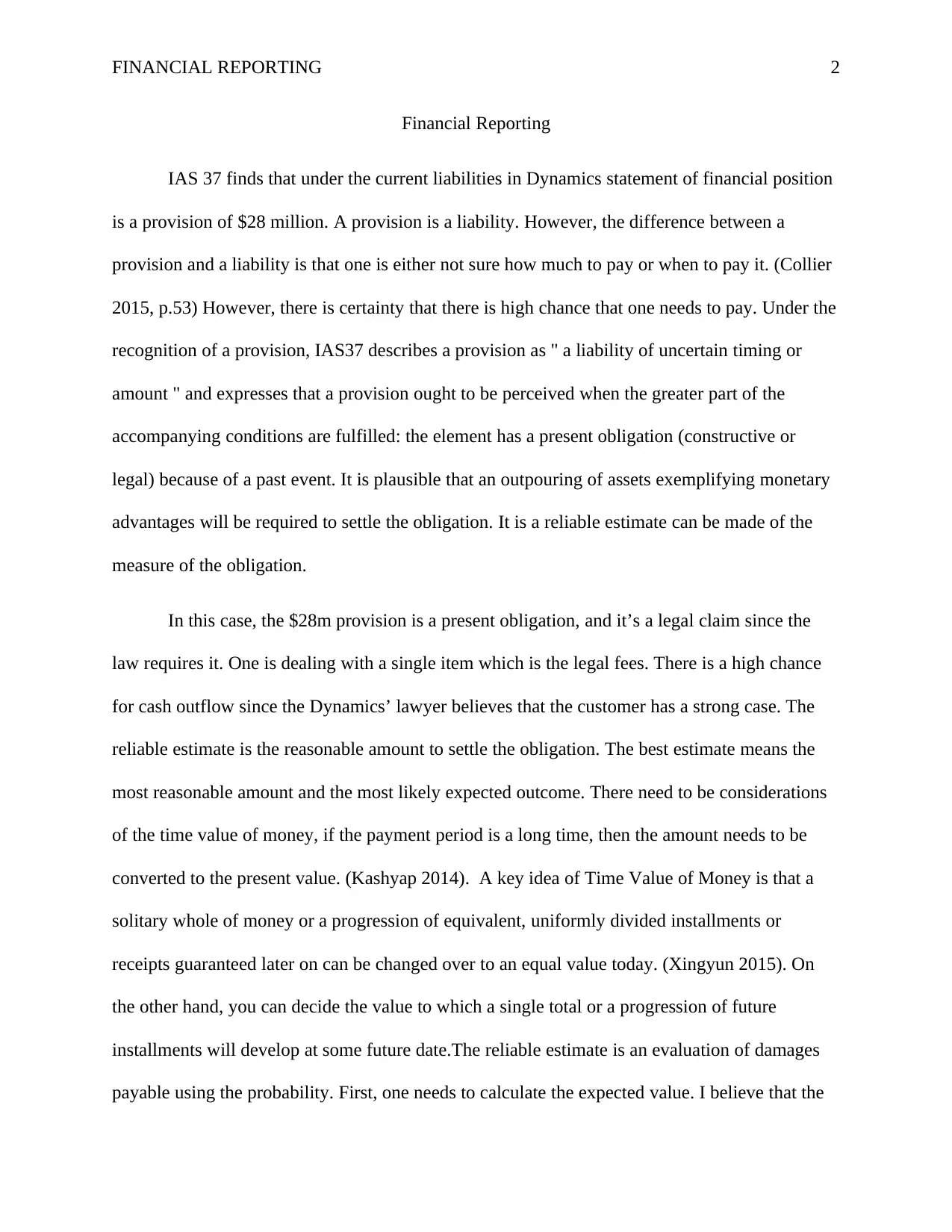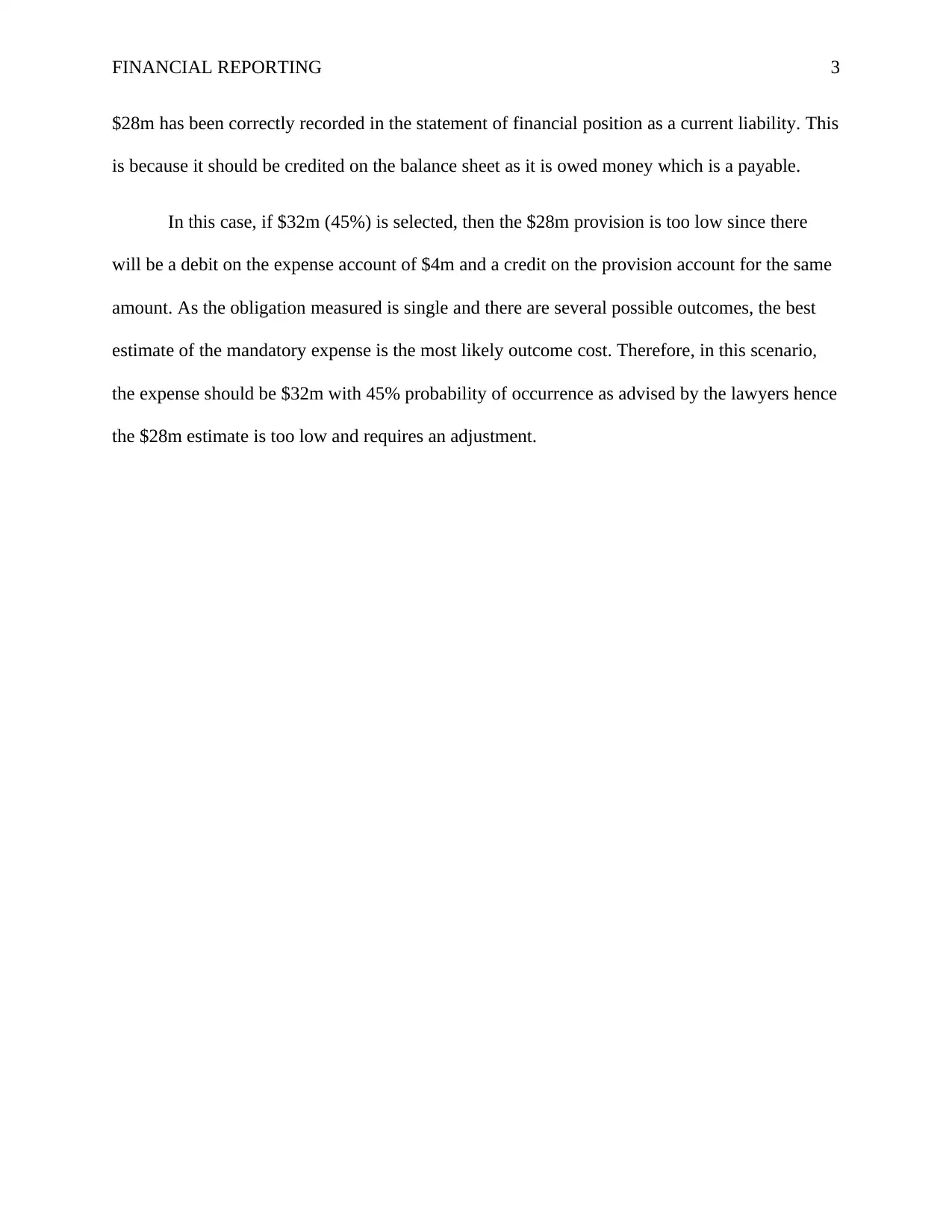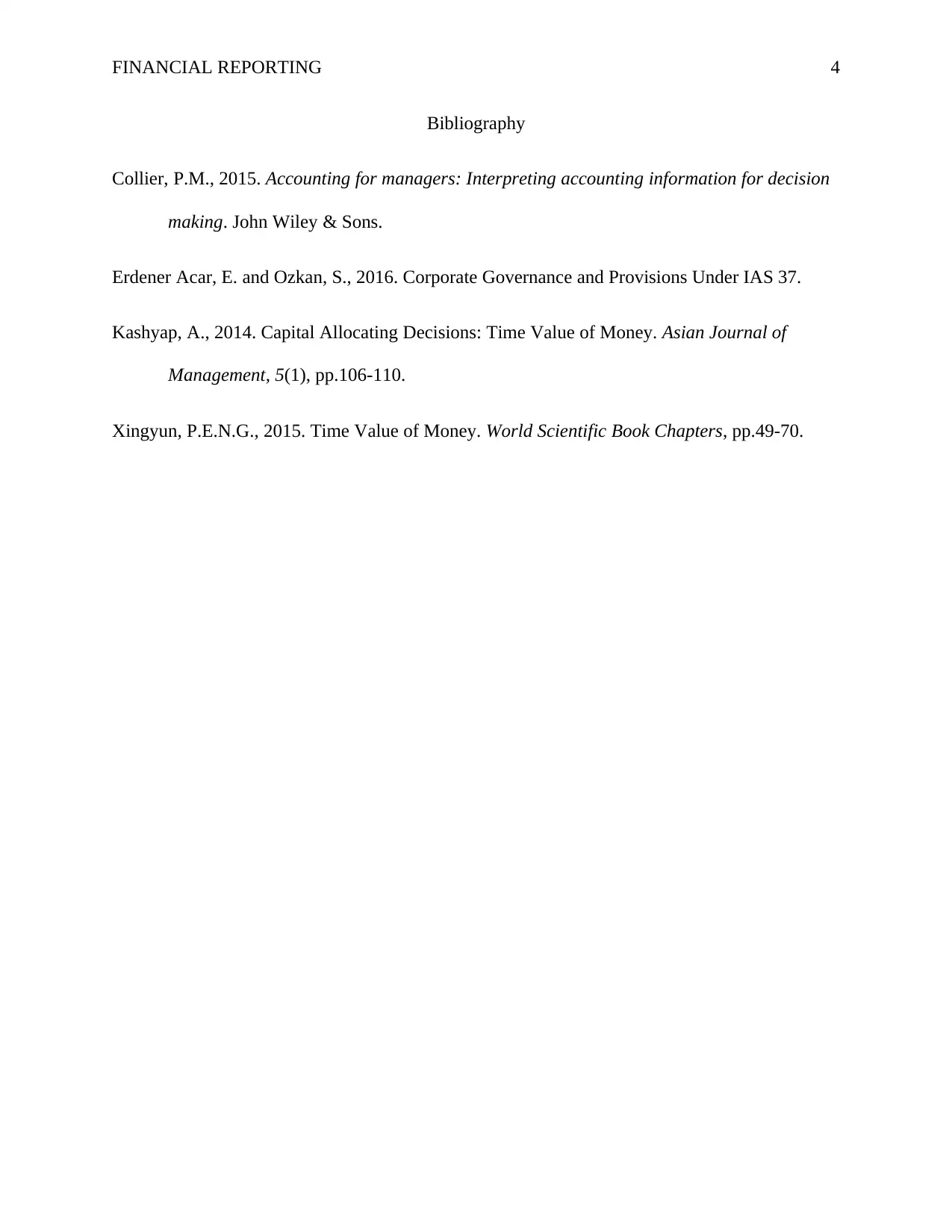Financial Reporting Analysis: IAS 37 and the Current Liabilities
VerifiedAdded on 2021/04/16
|4
|645
|37
Report
AI Summary
This report analyzes financial reporting, specifically focusing on the application of IAS 37 and its implications for provisions and current liabilities. The report begins by defining a provision and differentiating it from a standard liability, highlighting the uncertainty surrounding the timing or amount of the obligation. It then explores the criteria for recognizing a provision under IAS 37, emphasizing the need for a present obligation, the likelihood of an outflow of resources, and the ability to make a reliable estimate of the obligation. The report applies these concepts to a scenario involving a company's legal fees, assessing the accuracy of a $28 million provision in light of potential outcomes and probabilities, and the time value of money. It concludes that the $28 million provision might be too low and should be adjusted. The report provides a comprehensive overview of the accounting principles and the impact of provisions on financial statements.
1 out of 4











![[object Object]](/_next/static/media/star-bottom.7253800d.svg)